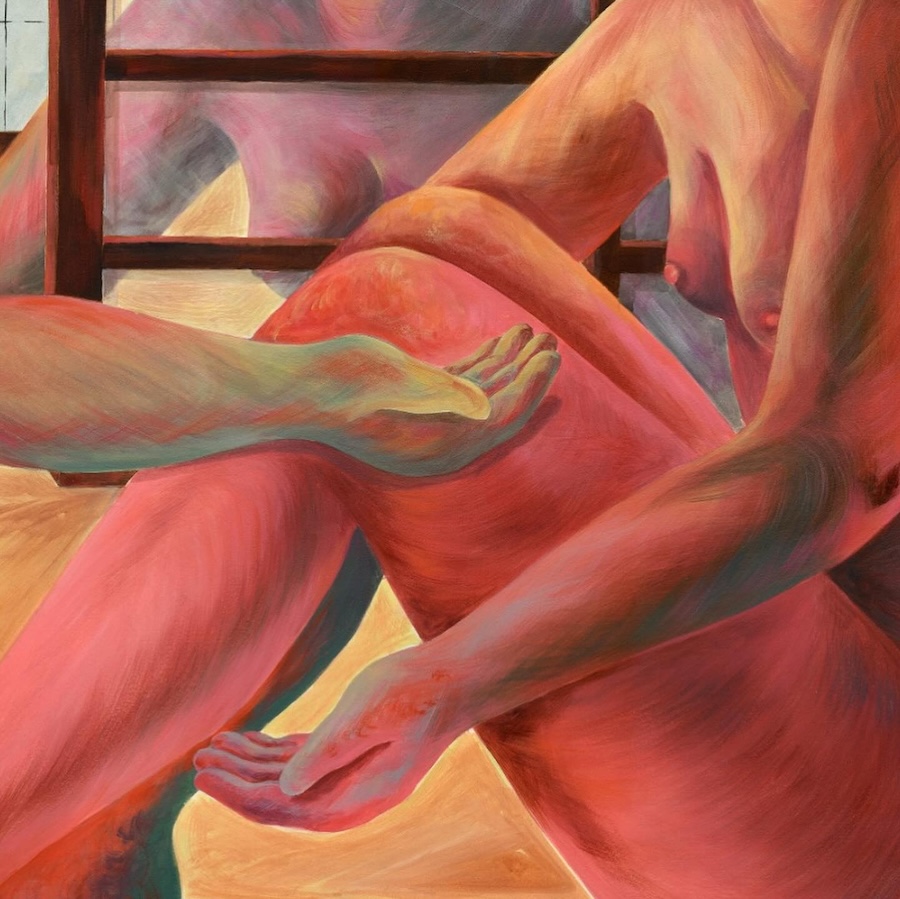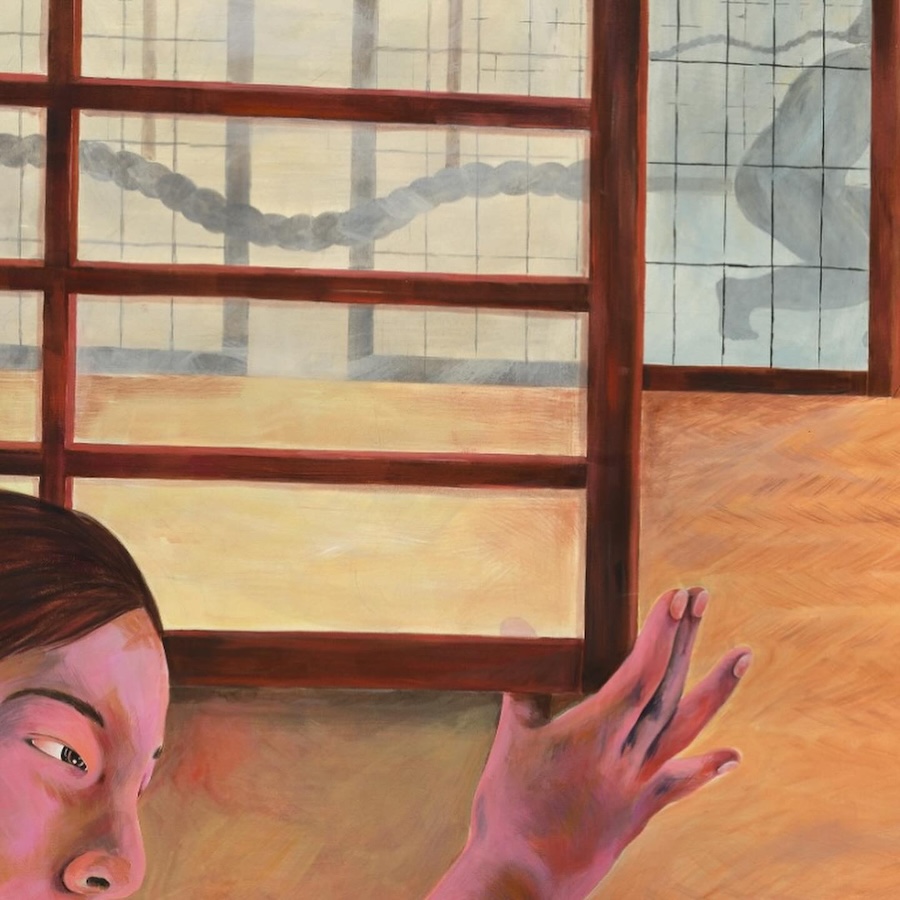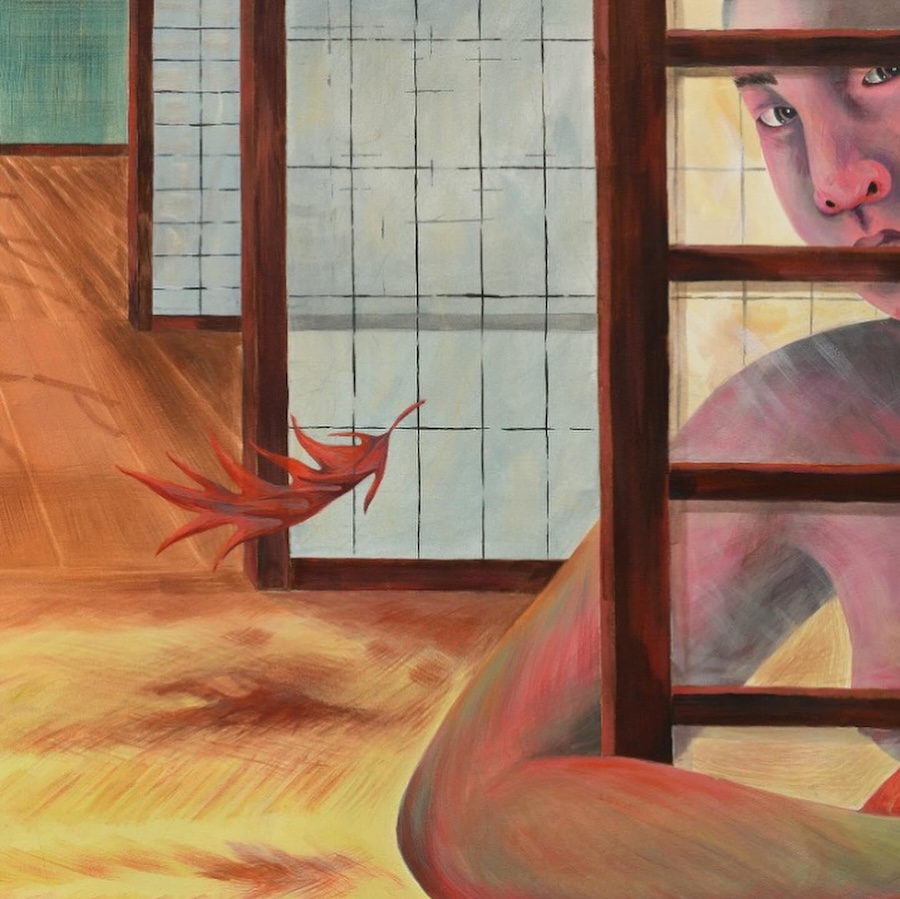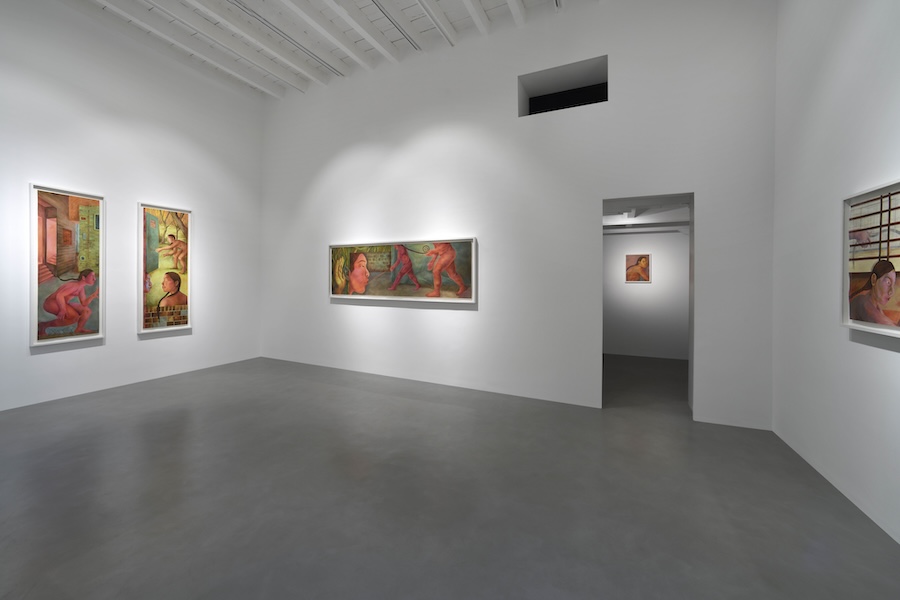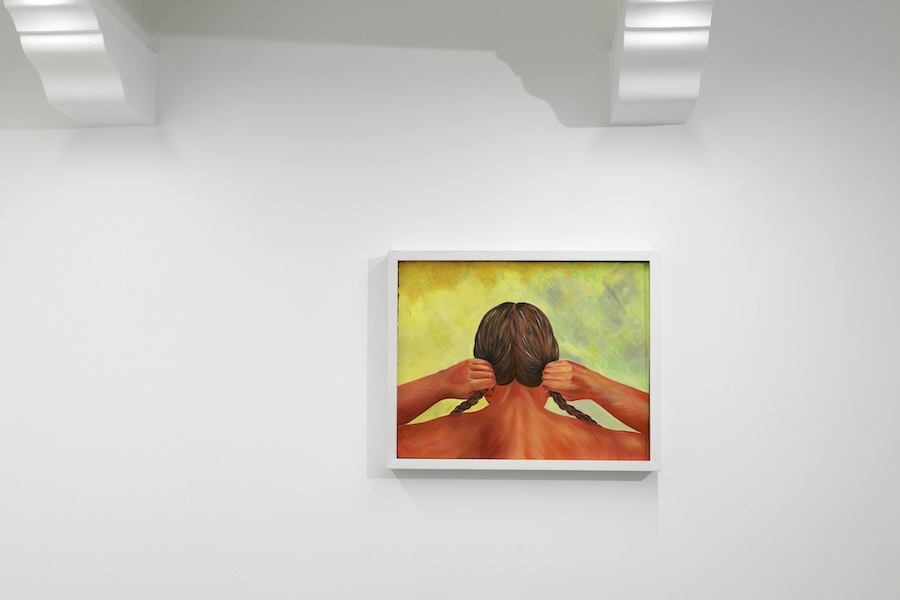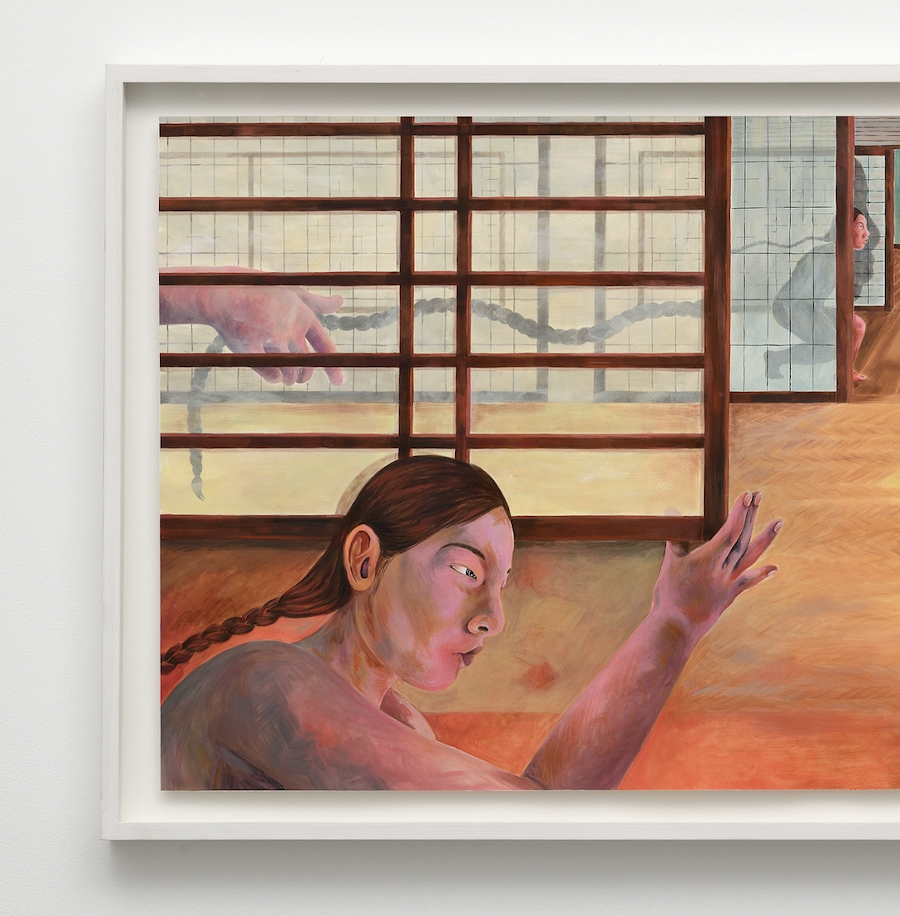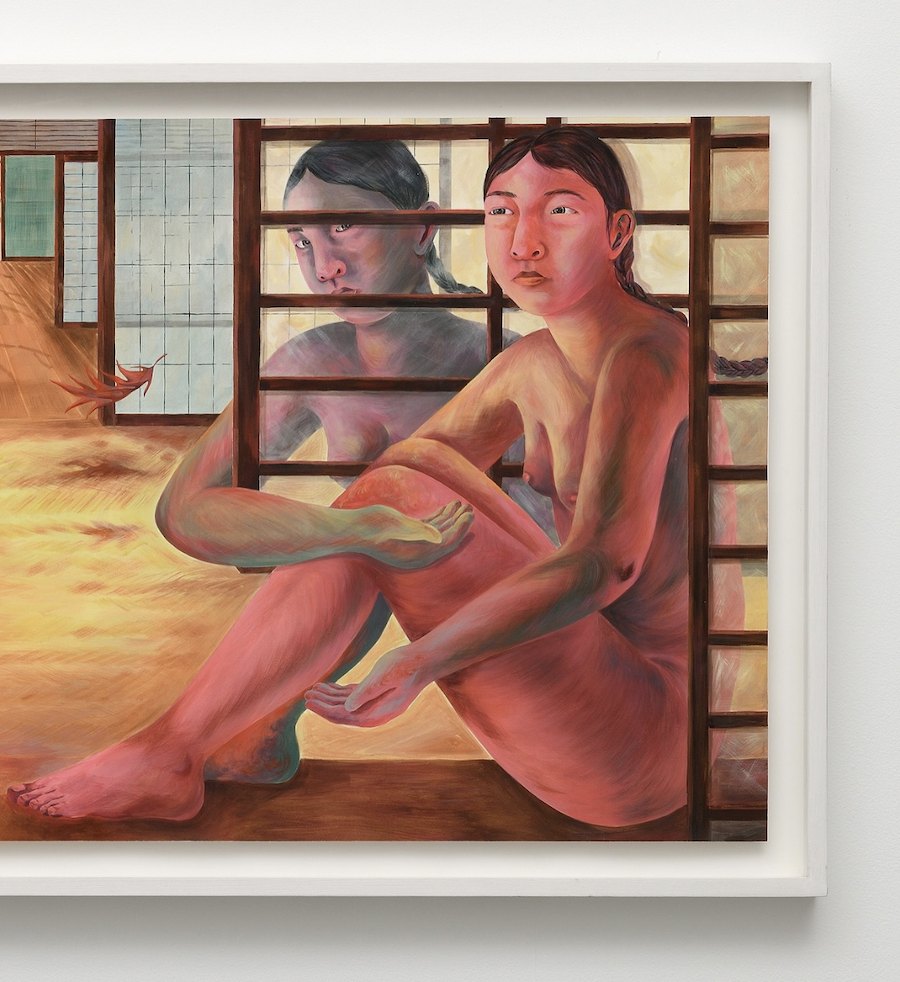Galleria Poggiali is delighted to present The Echo’s Return, the first solo show in Italy by the American artist Lily Wong, on view in the gallery’s premises in Foro Buonaparte 52, Milan.
Wong’s universe is characterised by a constant rebound between a multitude of individual experiences that constitute fragmented narrations. The subjects move on the canvas, traversing dreamlike dimensions. With the slow pace and patient serenity of those trying to balance on a tightrope, they move through the compositions, interacting with each other, establishing bonds and drifting apart, inhabiting landscapes in search of an equilibrium.
The bright colours typical of the artist’s pictorial production emerge in the compositions like vital impulses, pulsations that transform the paintings into doorways opening onto interior worlds. In the same way, the nudity of the figures is not merely an aesthetic quality, but rather reveals their vulnerability and the incessant quest for connection, exploring the complexity of human emotions.
The exhibition displays a series of new works that represent a significant evolution in the artist’s practice: a cycle consisting of four large-format works that dialogue with four medium and small works. They explore themes connected with the pliancy of memory and its ability to deposit itself within micro and macro contemporary narratives.
The large-format works reinterpret the two traditional types of support for oriental art: handscrolls or horizontal scrolls (手捲 S, shǒujuǎn) and hanging scrolls (Chinese: 立軸, lìzhóu; also known as 軸 or 掛軸), used to display a series of scenes in Chinese, Japanese (巻物?, makimono) or Korean painting and calligraphy.
Yet the stories that Wong represents appear as anything but linear. The gestures of her figures are elusive and the narrations remain suspended, leaving the conclusions of the stories open. In Echo and An Exchange, for instance, the story can be explored from several angles. The suggestion is of a continuity that extends beyond the edges of the paper scroll, and the artist evokes a concept of profound space and fluid time, as if the figures were caught up in a perpetual cycle. Conversely, the vertical works such as Maze and Make it Real appear like large vignettes capturing isolated fragments of a bigger story.
Displayed together for the first time, these works produce an all-over effect that extends beyond the edges of the paper to invade the entire room. In this way, Wong’s work becomes a shared narrative engaging the works, the artist and the observers, inviting both more intimate exploration and a collective experience.

